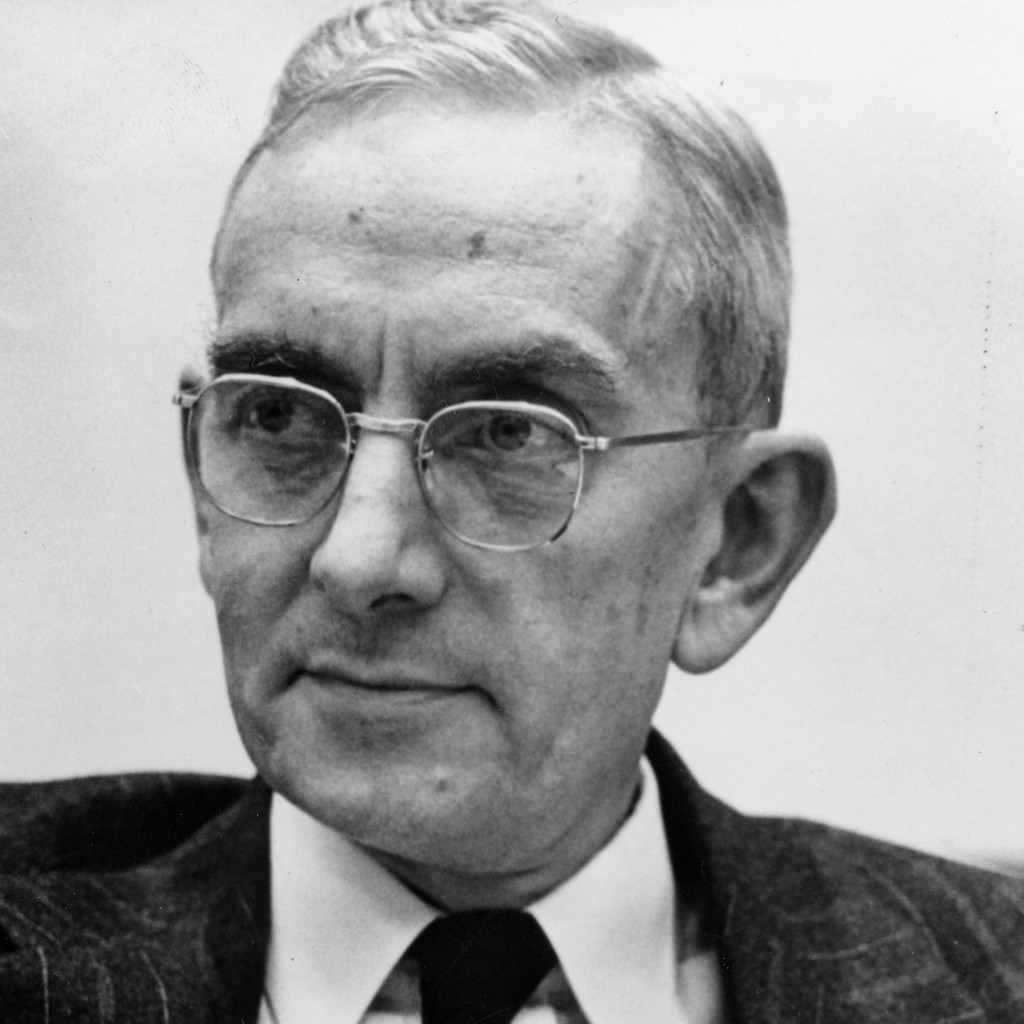Brian O’Brien
Brian O’Brien

Source: AIP Emilio Segrè Visual Archives, Hecht Collection
1951-1952 OSA President Brian O’Brien was born in 1898 in Denver, Colorado, USA, and began his education at Chicago Latin School, USA, and continued at Yale University, USA, receiving a degree in electrical engineering in 1918, and a Ph.D. in physics in 1922. For the next year he served as a research engineer with Westinghouse Electric Company in Pittsburgh, Pennsylvania, USA. O’Brien’s scientific research ranged from physiology and human vision, to a motion picture film format that introduced audience to high-definition widescreen movies.
In the 1920s he studied the biological effects of solar radiation on tuberculosis at the Adams Memorial Hospital, USA, and developed arc lamps that produced enhanced ultraviolet radiation at therapeutic wavelengths. He also created a unique way of irradiating milk to produce vitamin D. In 1930 O’Brien went to the University of Rochester, USA, as a research professor of physics and optics. He remained at the university for 23 years, becoming director of the Institute of Optics in 1938. Over the years he trained hundreds of students.
During World War II, O’Brien oversaw tremendous growth at the Institute. He also directed the National Defense Research Committee program, developing several military optical systems, including night vision devices. In addition, he worked on ultrafast Schmidt optical systems requiring aspheric optics on a production scale.
O’Brien’s most ambitious engineering project began after an unlikely meeting with Broadway producer Michael Todd. Audiences in New York City were being wowed by a dramatic new motion picture process called “Cinerama”. Todd wanted to interest O’Brien in developing a process to rival the new widescreen movie format.
When O’Brien joined the American Optical Company (AO) in Southbridge, Mass., in 1953 Todd contracted with AO to develop the system, known as Todd AO. This system called for a new concept in wide field projection onto a deeply curved screen, which O’Brien invented, and he also developed special equipment for the 70 mm film.
During the Todd AO project, O’Brien also initiated a pioneering project at AO on fiber optics. While still at Rochester he had discovered the key to efficient light transmission in optical fibers, namely the use of a low refractive index coating on the fiber “core”.
O’Brien retired from AO in 1958 but continued on with the company as a consultant. From 1959-70 he was a member of the Air Force Scientific Advisory Board. In 1970 he helped form the Space Program Advisory Council to advise NASA on future programs.
For his work in optics in World War II he received the Medal for Merit, the nation’s highest civilian award. He also received OSA’s Frederic Ives Medal, and he was elected a Fellow of OSA in 1959.
O’Brien died in 1992.
Document Created: 26 July 2023
Last Updated: 18 July 2025
